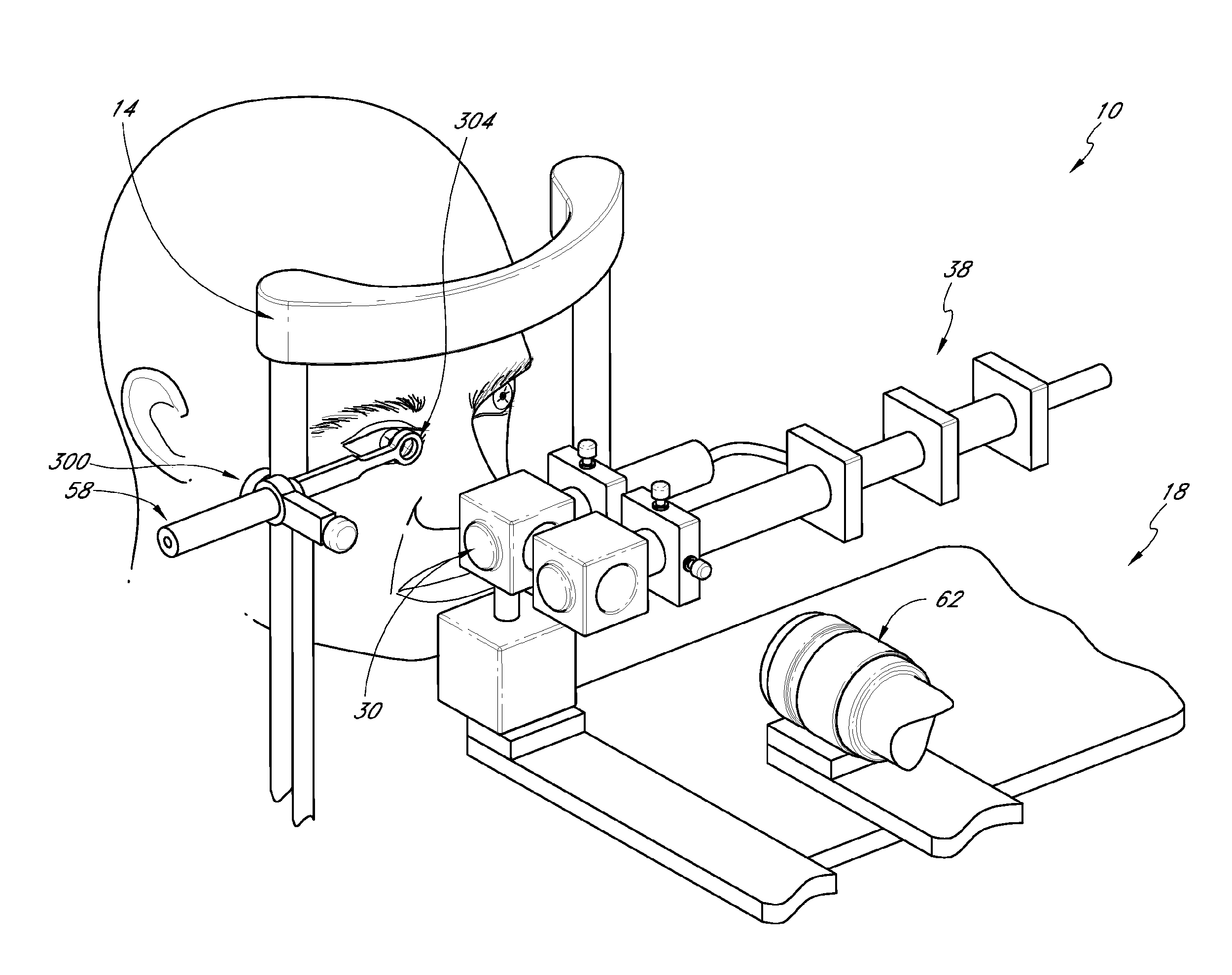Method and apparatus for centration of an ocular implant
a technology of ocular implants and centration chambers, which is applied in the field of centration chambers of ocular implants, can solve the problems of 400 microns of error introduced in standard techniques for corneal inlay placement, and the inability to achieve consistent performance of small aperture devices, etc., and achieve the effect of accurate method and apparatus and increasing the depth of focus of the ey
- Summary
- Abstract
- Description
- Claims
- Application Information
AI Technical Summary
Benefits of technology
Problems solved by technology
Method used
Image
Examples
Embodiment Construction
[0025]This application describes an apparatus and technique for identifying and marking a position corresponding to the intersection of a patient's line of sight with the anterior surface of the human cornea. The line of sight is an imaginary line from the eye to a perceived object as referenced by the person doing the viewing. Additional apparatuses and techniques for aligning a patient's line of sight are described in U.S. Publication No. 2005 / 0046794, published on Mar. 3, 2005, the entirety of which is hereby incorporated by reference. Features of these additional apparatuses and techniques can be used in combination with and / or can be substituted for features described herein.
[0026]FIGS. 1A and 1B illustrate two views of an ocular inlay centration system 10. The system 10 includes a patient interface portion 14, a clinician data acquisition portion 18, and a plurality of optical components located therebetween. The optical components are configured to generate one or more center...
PUM
 Login to View More
Login to View More Abstract
Description
Claims
Application Information
 Login to View More
Login to View More - R&D
- Intellectual Property
- Life Sciences
- Materials
- Tech Scout
- Unparalleled Data Quality
- Higher Quality Content
- 60% Fewer Hallucinations
Browse by: Latest US Patents, China's latest patents, Technical Efficacy Thesaurus, Application Domain, Technology Topic, Popular Technical Reports.
© 2025 PatSnap. All rights reserved.Legal|Privacy policy|Modern Slavery Act Transparency Statement|Sitemap|About US| Contact US: help@patsnap.com



